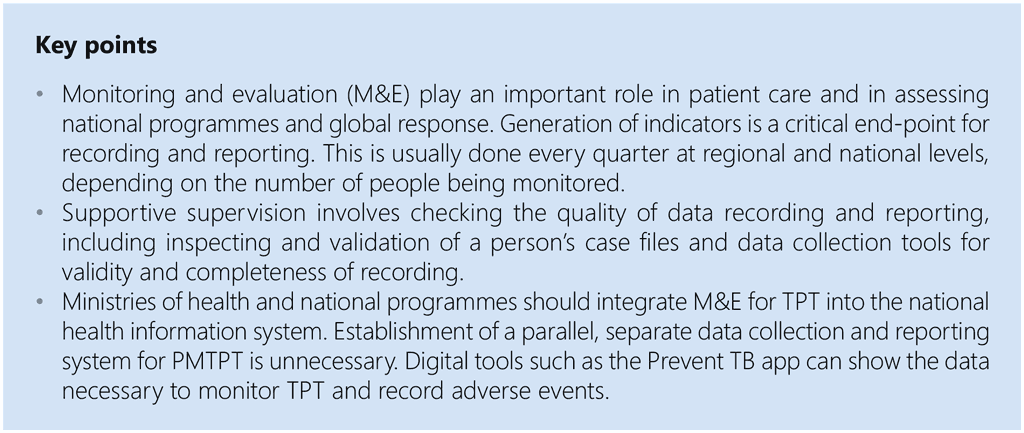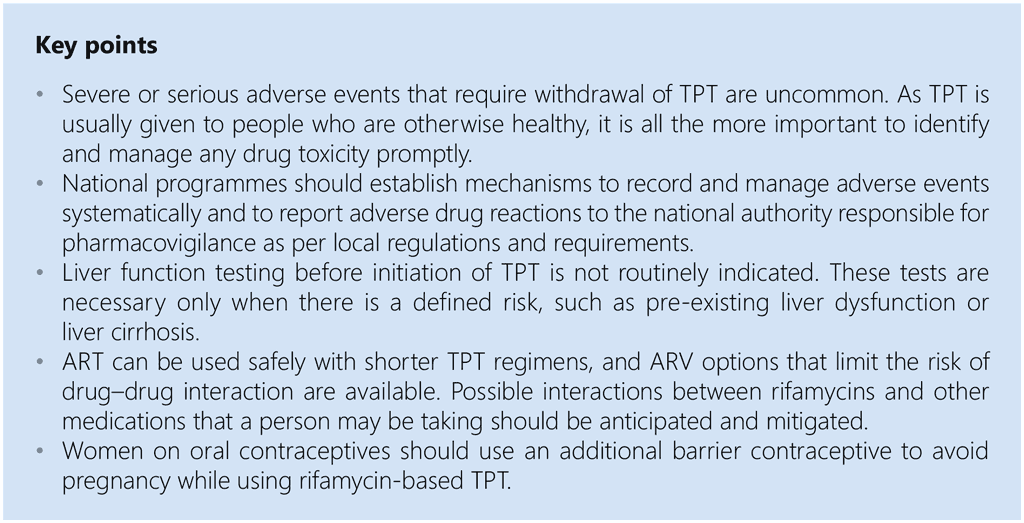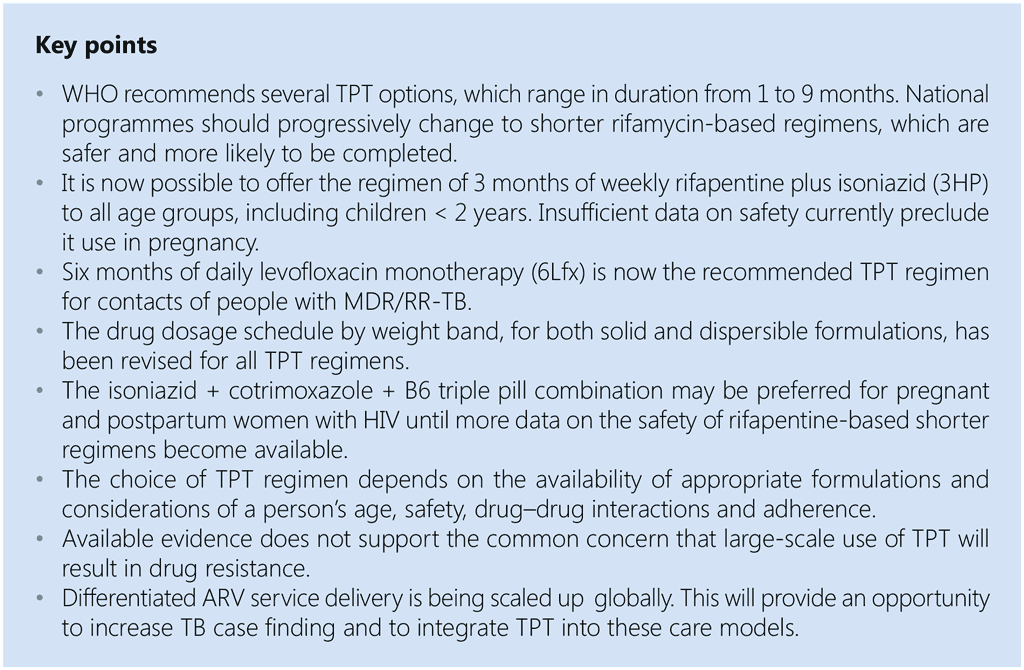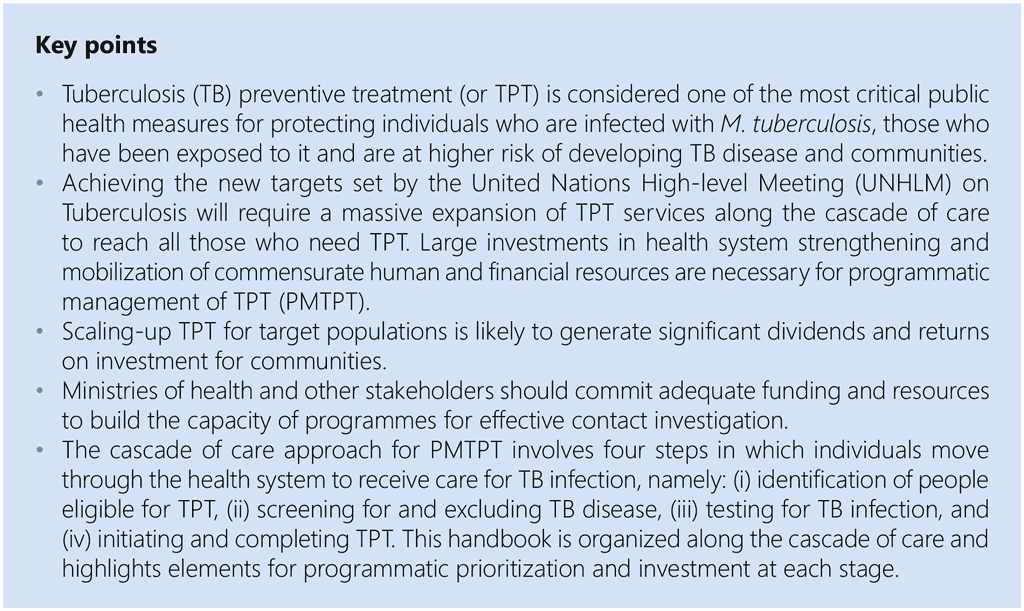8. Monitoring and evaluation


8.1 The role of M&E
M&E play important roles in patient care and in assessing national programmes and the global response (Fig. 11).
 Feedback
Feedback


M&E play important roles in patient care and in assessing national programmes and the global response (Fig. 11).


WHO has long recommended use of TPT for populations at risk of TB, particularly those with HIV and child household contacts of TB patients.


The fourth step in the cascade of care for PMTPT is the choice of TPT regimen and providing support to people on TPT in completing their treatment.


About one fourth of the world’s population is estimated to have been infected with M. tuberculosis (1,2).
TPT falls broadly into three categories: (i) isoniazid monotherapy for 6 or 9 months (6H or 9H), (ii) rifamycin-based shorter treatment and (iii) Lfx for 6 months (6Lfx) for people exposed to MDR/ RR-TB. Isoniazid preventive treatment (IPT) for 6 months was the mainstay of TPT until recently, for both adults and children, HIV-positive and HIV-negative, and in high and low TB incidence countries. Several systematic reviews have consistently demonstrated the efficacy of IPT in preventing TB disease among people infected with M. tuberculosis.
The structure of the network and the testing packages available at each level should be tailored to meet the needs of the community and the local epidemiology of TB. When considering placement of a diagnostic test, targets to be considered should be demand based rather than population based and should include: